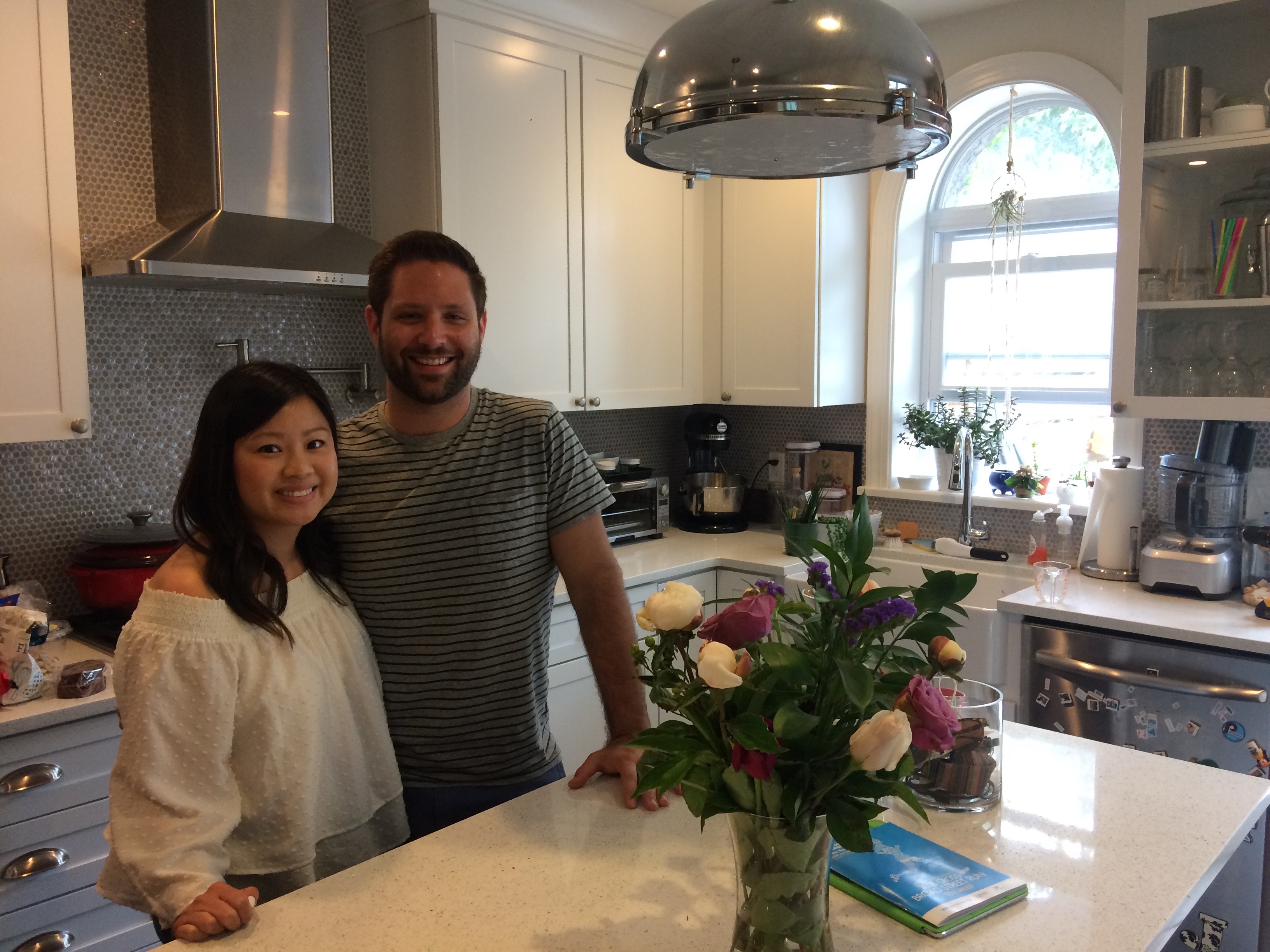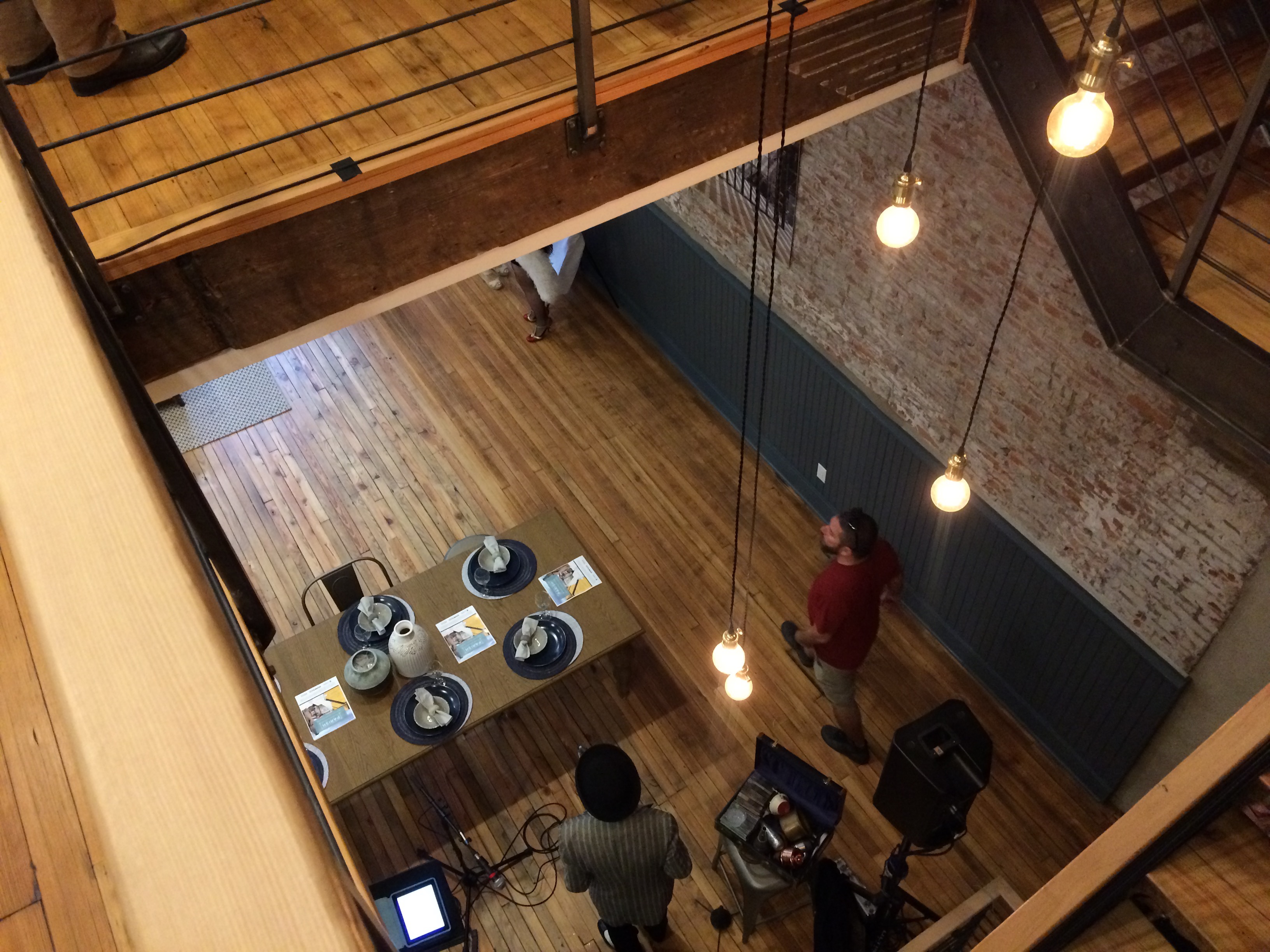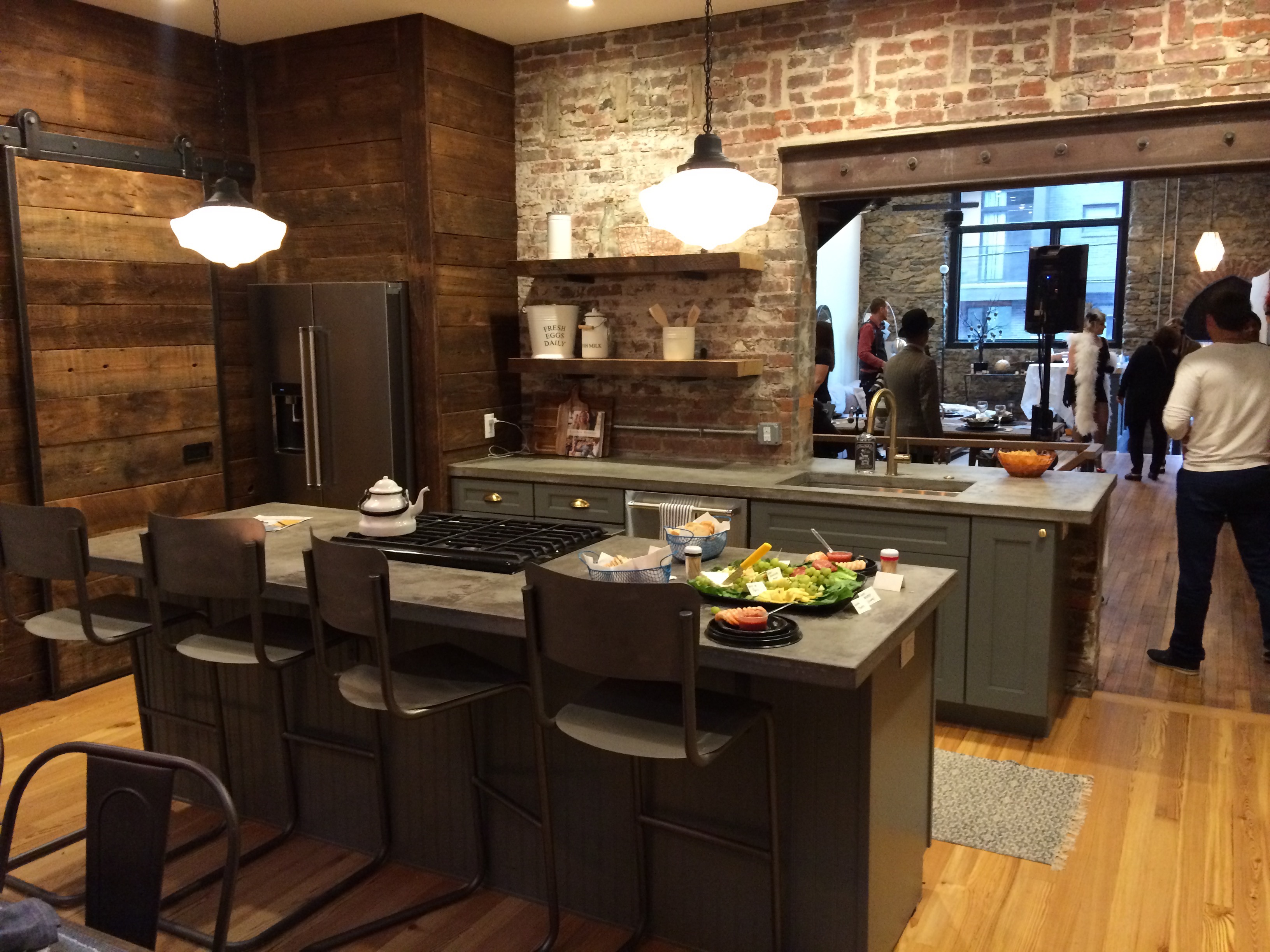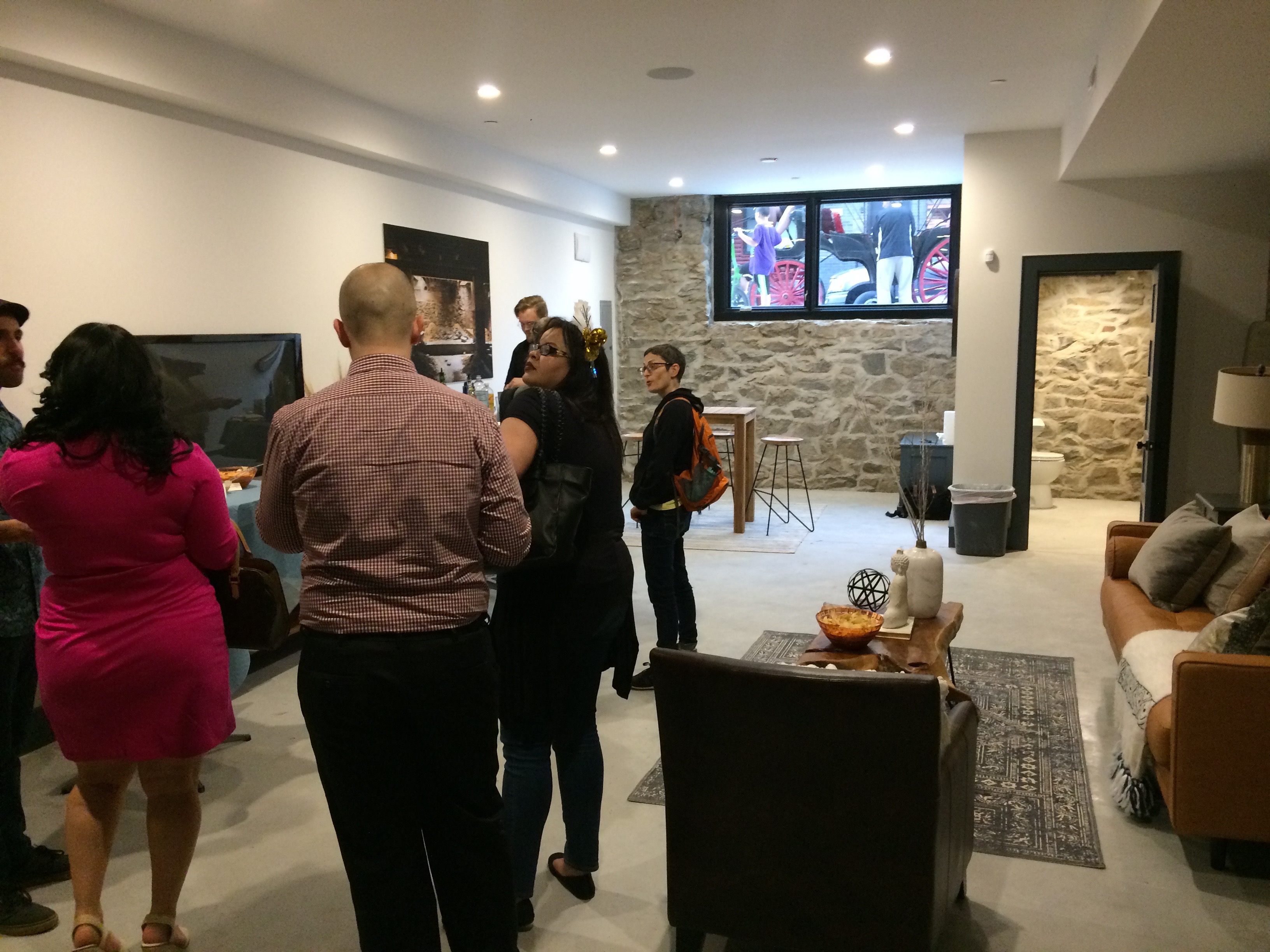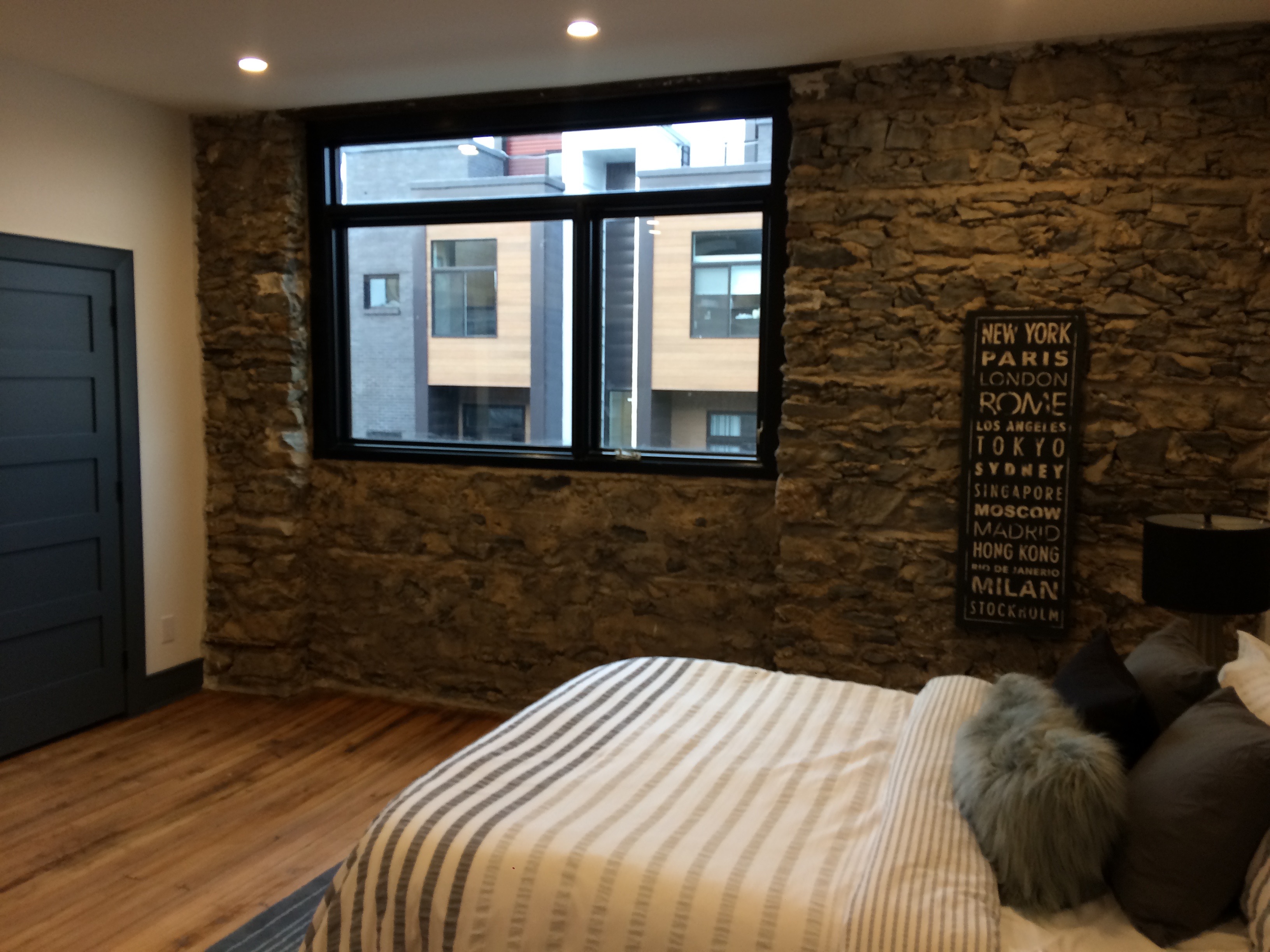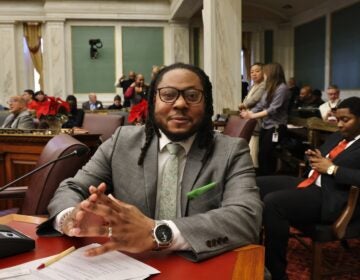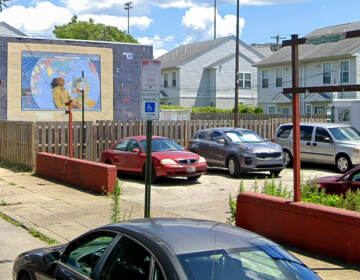As Philadelphia’s housing market booms, economists warn the city may be in a bubble—or something worse
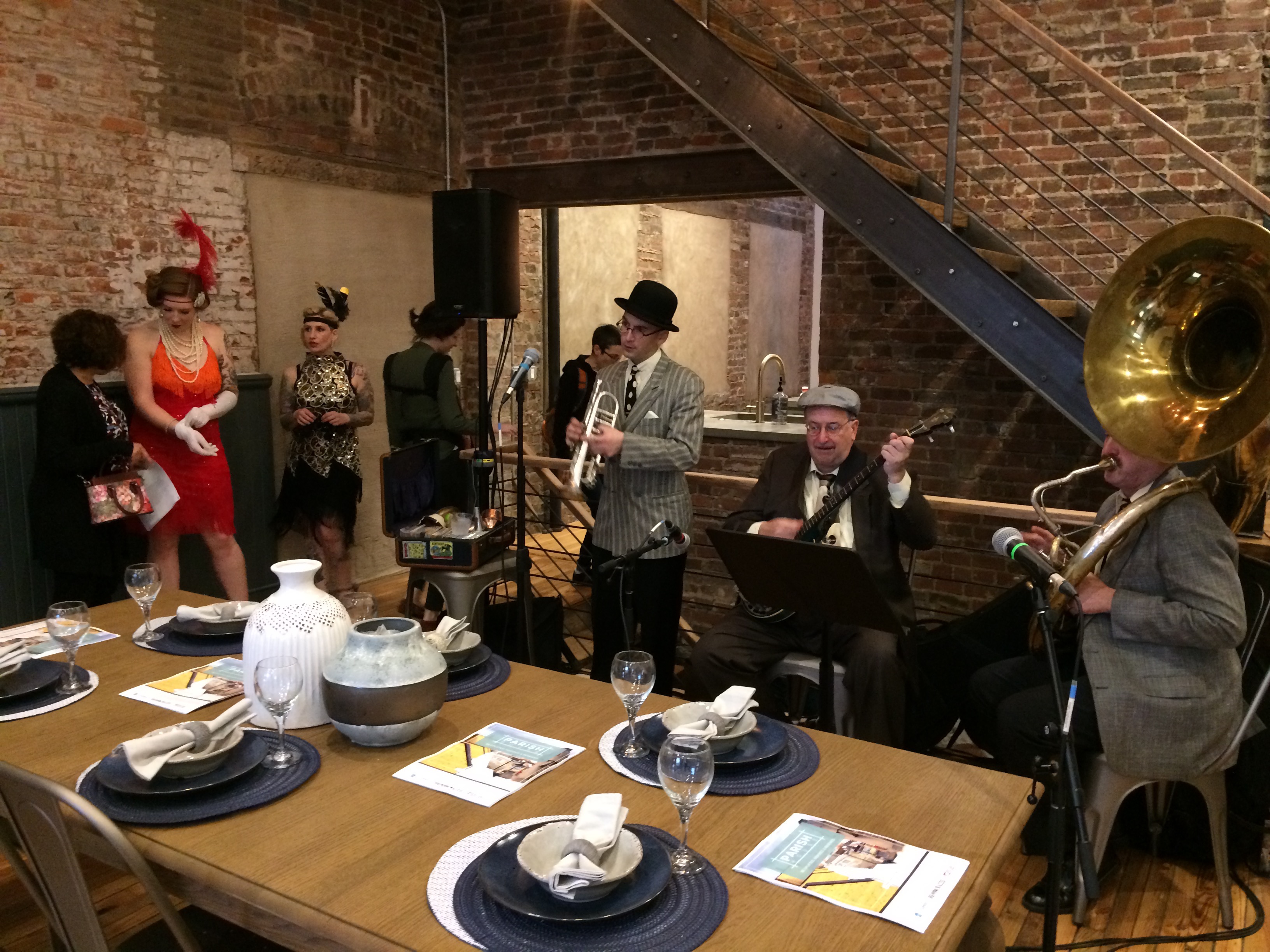
Stephanie Somers knows how to throw a party.
At an open house for a set of townhouses built out the shell of an 105-year-old rectory, the realtor picked a Prohibition theme. Curious neighbors and would-be buyers sipped speakeasy cocktails while a jazz band played and a burlesque troupe dressed up like flappers danced the the Lindy Hop. Between the performances, guests admired the arabesque bathroom tiles, reclaimed-wood floors, and impressive roof deck views.
Swanky open houses are rare, but not unheard of, in some of Philadelphia’s wealthier neighborhoods, where asking prices this high — $680,000 for a three bedroom rowhome — are par for the course.
But not here. This open house is in East Kensington, just a few blocks from some of the most notorious drug corners in the United States, let alone Philadelphia. For decades, this neighborhood attracted more blight than developers, even separated from the most disinvested parts of Kensington by Lehigh Avenue and Conrail’s railroad tracks.
But attitudes are changing enough to justify home values more than four times the city’s median sales price of $143,000. Just a few weeks after the open house, all but one of the five units were under contract (that lone holdout was still under construction, not yet ready to be shown to potential purchasers). According to Somers, the young professionals and empty nesters buying expensive homes in places like Kensington, Francisville, Brewerytown and Point Breeze aren’t letting a neighborhood’s tough reputation keep them away.
“I think there is a level of familiarity that doesn’t scare off these buyers from purchasing an exquisite piece of property there, on the border of Kensington and East Kensington,” said Somers.
“Y’know, it’s Kensington,” added Somers. “I mean, they’re buying in Kensington.”
According to data compiled by Drexel University economist Kevin Gillen, the average home for sale in Philly spends less than two months on the market before it’s sold. That’s a turnaround time Philly hasn’t seen since just before the housing bubble broke in 2007.
After years of anemic economic growth, the city has finally started to recover from the Great Recession. Lots of long-time renters are ready to buy for the first time. Those first-time buyers allow sellers to cash in the equity from their starter homes in order to upgrade. Many are opting to stay in the city and buy new construction filled with amenities: The latest appliances, granite countertops, central air, a roof deck, and off-street parking figure prominently in the listings.
The combination of pent-up demand and a housing market where supply is lagging means skyrocketing prices.
“Right now, Philadelphia is outperforming not only most other metro areas in other cities, but even its own suburbs,” said Gillen. “That’s good news for us because, for quite a while, house prices here were depressed. House prices in Philadelphia County fell about 23 to 25 percent from peak to trough during the recession.”
While the timing of the city’s recovery from the recession partly explains the increase in demand for new houses, this may also mark a shift in consumer preferences.
Cities today aren’t as smelly, dirty and dangerous as they were forty, twenty or even ten years ago. Like many other cities growing again after long post-war population declines, Philadelphia has seen its violent crime rates steadily decline.
And the buyers spending nearly $700,000 for a rowhome in East Kensington, or a half-million for homes in Brewerytown or Point Breeze aren’t purchasing a starter home.
In Francisville, Jennifer Tran and Eric Griffin have no intention of leaving. The couple in their early thirties purchased a lovingly restored four-bedroom rowhome for $500,000 back in 2013. “We tried to build in all the things we need to stay here [and] not have to leave the city just go get a yard or get some outdoor space,” said Griffin.
The house has a large back yard for their dog, Olli, and enough space to raise a family if and when the time is right. “[We] tried to have everything here that would keep us here in the city, longterm.”
Tran and Griffin are the kind of couple that a decade or two ago would have moved to the suburbs. She works at the Navy Yard and he works in Manayunk, which would have made a home somewhere along the Main Line just as convenient a commute as Francisville. But they’ve made a commitment to Francisville, and so far that bet is paying off.
When they bought it, their home was the most expensive one on the block. Since then, the vacant lots across the street have been replaced with new condos and they no longer own the priciest parcel on the street. As Francisville fills, housing prices continue to rise.
Ruokai Chen made a similar bet along the border of Fishtown and East Kensington, purchasing a home for $415,000 last year. Based on neighborhood trends and comparables, the actuary expects the value of his home to continue to go up. In his late twenties, Chen managed to save for the large down payment thanks to the combination of a high-earning job and having graduated debt-free courtesy of a Curtis Institute education.
It’s the same story all across the neighborhoods surrounding Center City, fueling the highest housing prices the city has ever seen. “The level of house prices in philadelphia is at an all time high,” said Gillen. “It’s about 12 or 14 percent higher than its previous peak back in 2007, during the previous peak before the boom.”
Notably, Tran, Chen, and other buyers PlanPhilly spoke with for this article all mentioned—without prompting—the quality of their local neighborhood school, noting it in marked, favorable contrast to their lowly impressions of the School District of Philadelphia as a whole.
Ironically, part of what is fueling Philadelphia’s housing demand, and thus the spike in housing prices, is the city’s relative affordability compared to other metro areas, says Nela Richardson, an economist with the web-based real estate company, Redfin.
“I went to school in Philly 20 years ago,” said Richardson, who graduated from the Wharton School at the University of Pennsylvania, “The city already had it [back then], and people finally awakened to the to the fact that you can get the Philly urban experience for half the cost of DC and a quarter of the cost of New York.”
Redfin recently found that users of its website based in New York City and Washington most frequently searched for housing in Philadelphia when searching locations outside of their current cities. According to Richardson, Philadelphia “is just that kind of center of activity where you can finally have a great job and an affordable cost of living. You don’t have to make several hundred thousand dollars [just] to live in town.”
Driven by the intense demand, Philly’s high housing prices are fueling a construction boom. While lagging, supply may be starting to catch up, as thousands of new condos, rowhomes and apartments are springing up across the city .
That has some realtors and economists worried that the city may be in a small housing bubble, driven by demand, rather than an oversupply of credit as in 2007.
“I think we’re in a little bit of a bubble,” said Somers, who expects the market to cool as new apartments and condos come online in the near future.
“My crystal ball would say ‘sell’ in the next year and a half to two years, because I just don’t see this lasting,” said Somers. “I’m really concerned about the new construction — there’s a lot of that going on. I’m wondering when the demand for that will be not so interesting.”
Housing prices will continue to appreciate only if two things occur, said Gillen.
One, the city has to continue to grow in population. That seems to be happening, although it did slow down last year. An increasing population translates into demand for apartments and homes. While the two submarkets play off each other a bit—expensive home prices tend to lead more people to rent longer, which can lead to relatively high apartment prices—they both rely on the basic arithmetic that more people wanting to live here means higher prices.
Two, Philly needs more jobs. The city’s unemployment and poverty levels remain stubbornly high. While it recently increased at a healthy 2.8 percent clip, Philadelphia’s jobs growth has lagged behind peer cities for years.
If Philly stops growing in population, it will mean that Philadelphia really is in a housing bubble. Unlike the disastrous bubble a decade ago, this one would fizzle more than pop. Prices will slow, maybe dip down a bit. For recent buyers who suddenly need to move or developers looking to quickly flip properties, that will hurt. But for most residents, the impact will be minimal.
But, if the population continues to rise as people relocate from the suburbs and other cities, yet the city doesn’t see broad job growth, economists say Philly will have a different kind of problem on its hands.
“You move to a permanent plateau of unaffordability like New York or San Francisco, where homeownership is just out of reach for most people and the cost of housing — whether it’s owning or renting — consumes a much higher share of your income than it would in less pricey cities,” said Drexel’s Gillen. “We don’t want either of those situations.”
Moreover, job growth in the city will need to be broadly based. When Comcast finishes its second tower, the cable giant will relocate thousands of high-paying jobs from New York to Philadelphia. That sort of influx will put added pressures on the city’s higher end real estate market, leading to further increases in real estate values in the neighborhoods adjacent to Center City. But it’s unlikely to bring a comparable number of blue collar jobs , meaning few of the 26 percent of Philadelphians currently living in poverty will gain employment.
It’s a conundrum that Brookings Institution scholar Bruce Katz has described thusly: “Gentrification is not Philadelphia’s problem. You don’t have a housing problem, you have an employment problem and a skills problem.”
If Philadelphia sees robust job growth, but mainly for high-skill positions, its poverty rate will decline, but only because so many impoverished Philadelphians will be priced out of the city. The underlying hardships won’t be resolved, they will be simply shunted across city borders, often amplifying transit difficulties. While many will enjoy significant economic gains from such gentrification, others won’t, and money can only go so far in salving the psychological wounds from displacement.
The problem remains on the city’s horizon. Unlike San Francisco, Seattle, Portland, or New York City — cities that have witnessed intense appreciation of their housing markets in recent decades — Philadelphia still has room to grow. Entire neighborhoods beyond the rapidly gentrifying core remain full of vacant lots.
And Philadelphia’s real estate market remains cheap compared to those cities. According to Redfin data, the average luxury home (defined as the top 5 percent of the market) in Philadelphia was selling in the first quarter of 2017 for $1,010,000, while the remaining 95 percent of the market saw a median sales price of $189,000; In San Francisco, the median sales price for a sub-95th percentile home was $1,270,000 — more than Philly’s most expensive homes.
Still, Gillen and Richardson both say now is the time to think ahead, especially if the city continues to grow thanks to wealthier households moving here from the suburbs or other cities.
“If the high-end activity of all this [real estate] interest is coming from people outside the city, then the people that are there—the local residents—don’t share in that growth and prosperity,” said Richardson. “It’s what’s happened in DC, happened in New York, San Fran, LA — all across the country. Unfortunately, Philly is going to be no different.”
“This pattern has been repeating itself for the last ten years [in other cities]. And Philly is at the precipice of it,” warned Richardson. “This is the moment for city officials to really get the scope of the new population increases — who is coming, gathering the data and start planning appropriately in terms of zoning and really making those investments in affordable housing so everyone shares in the great growth experience.”
Richardson stressed that Philadelphia needs to plan for growth now to ensure that the housing supply can keep up with — and even overtake — housing demand. But in some of the city’s hotter neighborhoods, City Council is doing just the opposite, down-zoning large swaths in response to existing residents demands.
That makes it harder to build dense multifamily housing, the kind that keeps rents and home prices affordable in the long run. But it keeps land values low — land zoned for denser development is worth more than single-family designations. For residents already living in a booming neighborhood, increases in land value assessments led to higher real estate taxes, which can displace those who can’t afford the increase. So even though down-zoning may increase housing costs in the long run, in the short term it can help lower income residents weather gentrification.
For Gillen, the answer is job growth. He argues that the city needs to decrease its relatively high business taxes to entice more companies to move to the city proper instead of setting up shop right outside city limits. Gillen also pointed to Philadelphia’s difficult development landscape, where builders often must seek multiple levels of government approvals and face relatively high labor costs compared to similar real estate markets, as limiting the amount of new, low- and mid-market housing being built.
Affordability is a relative concept. If housing prices go up but median incomes rise faster still, Philadelphia will retain its affordable reputation. But if incomes don’t increase—or only increase among newcomers—it will become less and less affordable, perhaps jeopardizing one of the city’s main competitive advantages and alienating many residents.
WHYY is your source for fact-based, in-depth journalism and information. As a nonprofit organization, we rely on financial support from readers like you. Please give today.



